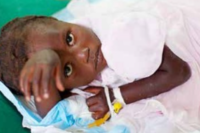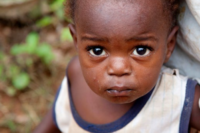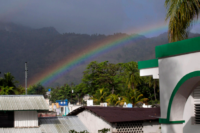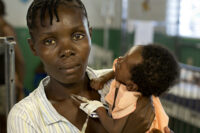By Thomas Pezzella, M.D.
During a trip Hôpital Sacré Coeur (HSC) in November, 1996 a discussion was held between the first president of CRUDEM, Dr. Ted Dubuque, and Dr. Tom Pezzella, the Founder/Director of the International Children’s Heart Fund (www.ichfund.org), regarding initiation of an open-heart surgery program in Haiti. Over 70% of health care delivery in Haiti is through international non-government organizations (NGO’s.) Haiti is the poorest country in the Western Hemisphere. With a population greater than 10 million people, the economic and political climate is very unsettled and insecure; a factor compounded by the January, 2010 earthquake, subsequent flooding, and the subsequent cholera epidemic. CRUDEM/ Hôpital Sacré Coeur is the only facility in the north with the capability to offer primary care and specialty care by foreign groups on a continuing basis with voluntary teams coming for short term (7-14 days) missions throughout the year.
The true incidence of heart disease in Haiti is unknown, yet both rheumatic and congenital heart diseases remain common, especially in young children. The incidence of coronary artery is unknown, but suspected to be high. There are very few diagnostic 2D echocardiography (ECHO) machines in the entire country, thus making an accurate incidence, prevalence, or definitive diagnosis of cardiac disease difficult to objectively document. There is no diagnostic or interventional cardiac catheterization laboratory presently in Haiti.
After considerable discussion and debate, the open-heart project was formulated. The ultimate goal was to establish a continuum of care ranging from prevention to diagnosis, and ultimately curative strategies. It was hoped this would serve as a model for future endeavors in other geographic areas of Haiti, particularly in Port-au-Prince, the capital.
From November 1996 to August 1997, equipment and supplies were gathered and sent to Haiti to bring the operating room and intensive care unit up to standard for performing open-heart surgery. An advance team of three went to Hôpital Sacré Coeur in August 1997 to set up the equipment, arrange for supplies and logistic support, and screen potential patients for surgery. In November 1998, a second trip was undertaken. Prior to the trip an ECHO machine was sent. This enabled more precise identification of patients.
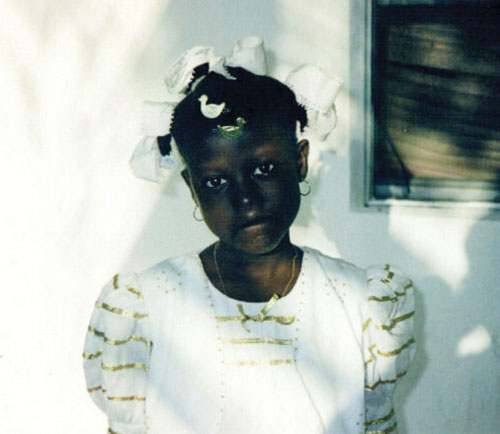 The team was increased to eight.
The team was increased to eight.
Four successful open-heart operations were performed.
In November 1997, a team of six from the University of Massachusetts Medical Center and St. Vincent’s Hospital, both in Worcester, Massachusetts, spent a week at Hôpital Sacré Coeur. The first two successful open-heart operations in Haiti were performed (VSD repair in a 7-year-old girl; and MVR in an 18-year-old male).
Both patients did well postoperatively and long term. In November 1999, a third trip with another team of 12 went to CRUDEM. Two mechanical ventilators were added, thus facilitating postoperative respiratory care. Three operations were successfully performed (two mitral valve replacements and one pulmonary valvotomy).
 In November 2001, a fourth trip with a team of 10 went to Hôpital Sacré Coeur. An additional heart/lung machine was sent. Three operations were successfully performed (ASD; MVR x 2.)
In November 2001, a fourth trip with a team of 10 went to Hôpital Sacré Coeur. An additional heart/lung machine was sent. Three operations were successfully performed (ASD; MVR x 2.)
 During all four trips, evaluation of cardiac patients was performed. Several screened patients, all children, were sent to the University of Massachusetts Medical Center in Worcester, MA, USA, for free open-heart surgery. Local medical and non-medical staffs were involved in all of our endeavors, thus assuring continuity of care, and allowing for further development and ultimately transition to local control.
During all four trips, evaluation of cardiac patients was performed. Several screened patients, all children, were sent to the University of Massachusetts Medical Center in Worcester, MA, USA, for free open-heart surgery. Local medical and non-medical staffs were involved in all of our endeavors, thus assuring continuity of care, and allowing for further development and ultimately transition to local control.
 Subsequently, an adult cardiac surgery team from the Mayo Clinic, headed by Dr. Tom Orszulak, CT Surgeon, made 3 trips to Milot. In November 2001, the ICHF team made its fifth trip and performed 3 open-heart operations.
Subsequently, an adult cardiac surgery team from the Mayo Clinic, headed by Dr. Tom Orszulak, CT Surgeon, made 3 trips to Milot. In November 2001, the ICHF team made its fifth trip and performed 3 open-heart operations.
A 6th trip in November, 2003, involved two teams over a two week period. Over 40 patients were evaluated utilizing the Acuson Cypress portable Echo machine. Nine patients underwent corrective cardiac surgery. A broad based strategy evolved to increase the number of teams, and pursue further training of native Haitian health care personnel. Several Haitian nurses from HSC spent one month observational training at Good Samaritan Hospital in Mt. Vernon, Il.
The Mayo Clinic team returned in February, 2005. They successfully performed 5 open heart operations.
 The International Children’s Heart Fund was planning to return in November, 2006 for 2 weeks, to perform both adult and pediatric cardiac surgery. In addition, a broad based initiative to study the incidence and prevalence of rheumatic fever and rheumatic heart disease was planned. However, due to logistical and local security and political issues the trip was cancelled, and the open-heart surgery program was suspended.
The International Children’s Heart Fund was planning to return in November, 2006 for 2 weeks, to perform both adult and pediatric cardiac surgery. In addition, a broad based initiative to study the incidence and prevalence of rheumatic fever and rheumatic heart disease was planned. However, due to logistical and local security and political issues the trip was cancelled, and the open-heart surgery program was suspended.
Since that time, further efforts consisted of annual diagnostic screening missions by the Mayo team, with several patients being operated on at the Mayo Clinic. It was hoped that, at some point, the program would be renewed. Other cardiology teams have made trips, especially Dr. William Battle and the cardiology team from Georgetown University in Washington, D.C. They have initiated an ECHO training program with great success.
In January 2009, a pilot mission was undertaken by Dr. Tom Pezzella to evaluate the feasibility of restarting the cardiac surgery program. The consensus was not to restart the program at that time, but to reevaluate the program at a later date.
The continuing poverty, the earthquake disaster in January 2010, and the subsequent flooding, cholera endemic, political unrest, violence, and security issues delayed any progress in resuming this project. However, given the recent interest of a number of foreign NGO’s and individuals in restarting cardiac surgery in Haiti, a new feasibility study was undertaken by Dr. Pezzella from November 27- December 1st, 2010.
A program was designed that included prevention, promotion, diagnosis, and treatment was recommended. It was stressed that cardiac surgery enhances the institution in many ways. In Puerto Rico >1,500 open heart operations are done per year for a population of >3 million. Given >10 million Haitians, at least that number would require surgery in Haiti. Very few Haitians can go abroad for this type of care. It was also clear that the program would require foreign support long-term, given that formation of a local indigenous Haitian cardiac surgery team would not be possible in the foreseeable future.
In January 2011, the way cleared and a 17 member cardiac surgery team arrived at Hôpital Sacré Coeur to resume this life-saving and unique for Haiti program.





